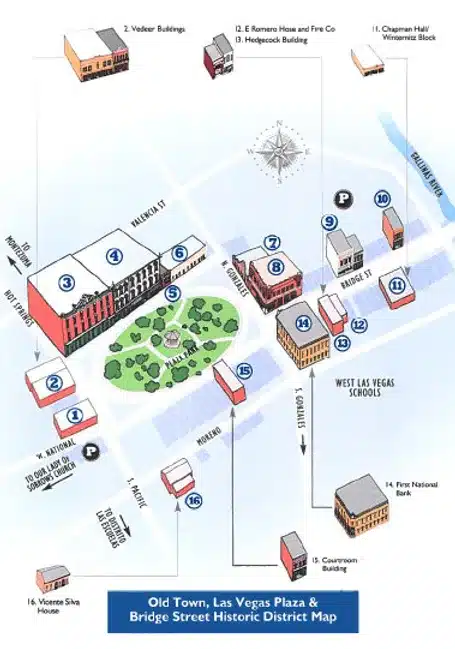District One: Old Town, Las Vegas Plaza & Bridge Street Historic Districts
The first flat-roofed, log and adobe houses stood side-by-side, one room deep around the Plaza, forming a defensive enclosure into which livestock could be herded in case of an attack. This new self-sufficient farming village stood on the Santa Fe Trail and was the first New Mexican settlement encountered by supply of trains coming from the United States. The trail meant jobs and commerce, and Las Vegas grew to over a thousand people by 1860. During the next twenty years its population quadrupled as it became a major trade center with businesses as well as residences lining the Plaza.
In 1879 the railroad arrived a mile east of the Plaza. Though a new town district was established with a competing commercial district, the entire city's position as a mercantile center was solidified because it was the first large town in New Mexico to be reached by the railroad. At this peak, Las Vegas' trade area expanded into western Texas.
The Plaza began to change. A windmill, erected in 1876 served briefly as a vigilante gallows. This sign of frontier justice was replaced in 1880 by a bandstand encircled by trees and a picket fence. Today's Plaza, with its gazebo under a canopy of mature trees, reflects the efforts of Las Vegas' first historic preservation movement led by Rheua Pearce and Johnny Villegas in the 1960s.
Wesche-Dole Building. 1805 W. Plaza ( Originally built as Our Lady of Sorrows church ca. 1840, rebuilt and expanded after 1865)
This building encloses the original Our Lady of Sorrows nave from 1840. By combining classical proportions and detailing of Greek Revival architecture with massive adobe and stone masonry, the U.S. Army introduced Territorial architecture into New Mexico -- perhaps the most significant innovation since the Spaniards introduced religious structures and adobe brick to the Pueblos over two centuries earlier. Santa Fe Trail Traders Andres and John Dold bought the building from the Catholic Church and built their mercantile headquarters in the military style. Early on, the front sported a two-story portal with balcony above. The building has been remodeled extensively by the proprietors of Plaza Antiques.
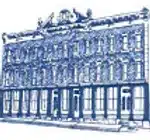 The Plaza Hotel, 230 N. Plaza (Built 1882)
The Plaza Hotel, 230 N. Plaza (Built 1882)
It was a matter of pride for every railroad town to have a fine hotel in which to house visitors. Local businessmen headed by Benigno Romero formed the Las Vegas Hotel & Improvement Company in 1880 to provide Las Vegas with the finest hotel in the territory. The hotel has a colorful history. It was home to early silent-film producer Romaine Fielding (see the ghost sign still on the west facade) in 1913 and the Mama Lucy Gang of liberal politicians in the 1960's. More than a century after it was built, Plaza Partnership, Ltd, acquired the property and meticulously rehabilitated the building, motivating reinvestment in Old Town and, once again, restoring the hotel as an object of civic pride. In 2008, the hotel was expanded into the adjacent Charles Ilfeld building. Recently it has undergone some interior renovation. The Plaza Hotel is an excellent example of Renaissance Revival architecture, featuring a grand pedimented baroque cornice at top.
 Maese House/Dice Apartments, 218 N. Plaza (Built pre-1846)
Maese House/Dice Apartments, 218 N. Plaza (Built pre-1846)
This one story adobe, although "modernized" on the exterior, is one of two buildings on the north plaza along with the Miguel Romero y Baca house on the northeast corner that pre-dates the Mexican American War of 1846. In that year, General Stephen Watts Kearney, commander of the American Army of the West, stood atop on this one-story building on the north side of the Plaza to address the town's population, claiming New Mexico for the United S
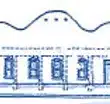 Desmarais House/Our Lady of Sorrows Parish Hall, 1810 E. Plaza (Pre-1883
Desmarais House/Our Lady of Sorrows Parish Hall, 1810 E. Plaza (Pre-1883
Like the other remaining adobe buildings on the Plaza, the Parish Hall lost its wooden porch and was stuccoed, though it retains Territorial- style lintels over the windows. The curvilinear parapet which now caps its facade dates to the 1930's or later- a picturesque folk addition.
 Chapman Hall/Winternitz Bock 125 & 127 Bridge St. (Built 1880s)
Chapman Hall/Winternitz Bock 125 & 127 Bridge St. (Built 1880s)
The Winternitz Block is a good example of local decorative brickwork with its vertical piers, recessed panels and stepped brick. In the early 1900's part of the building was converted for use as a movie theater. The building was rehabilitated by the Citizens Committee for Hispanic Preservation as a Santa Fe Trail Interpretive Center int e 1990's and later sold to private owners. The building has housed an art gallery, hair salon and dry cleaning service.
 E. Romero House and Fire Company, 155 Bridge St. (Built 1909)
E. Romero House and Fire Company, 155 Bridge St. (Built 1909)
The original wood frame fire house was replaced by this brick building. Its banded piers capped by pressed-metal "capitals" and its modest cornice with dentils (not brackets) make it Neo-Classical in style. The 1913 Sanborn insurance map indicates "2 horses owned by members, 25 volunteers, 1 paid man, 1500' of 2 1/2 inch cotton hose, 130' of ladder, 2 extinguishers." The building is now owned by the City of Las Vegas, and is being restored for use as a firehouse museum.
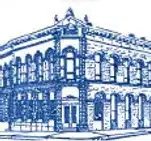 First National Bank, SE corner Plaza & Bridge St. (Built 1880)
First National Bank, SE corner Plaza & Bridge St. (Built 1880)
Incorporated in 1876 by the Raynolds Brothers, the First National Bank occupied an adobe building across the Plaza before moving to this new building in 1880. Most Italianate buildings employed mass-produced, cast-iron or pressed-metal ornamentation. The elaborate cornice of the First National Bank building was likely custom fabricated by local craftsman out of carved wooden bracketing and tin sheet metal. However, the remainder of this building's ornamentation was fashioned out of contrasting shades of local sandstone.
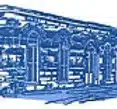 Vicente Silva House, 225 Moreno St. (Built ca. 1878)
Vicente Silva House, 225 Moreno St. (Built ca. 1878)
This fascinating house could be called a New Mexican vernacular, Italiante style residence. The elegant Palladian windows and alternating bands of red and tan sandstone are distinctive features of the facade. This was the home of Sheriff Lorenzo Lopez, who brought many of outlaw Vicente Silva's "society of bandits" of New Mexico to justive in the 1890s. Local folklore claims that this house was a meeting place for the Vicente Silva gang who operated the Imperial saloon and ballroom across Moreno Street on the south Plaza.
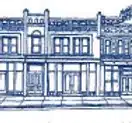 Veeder Buildings, 1815 W. Plaza (Built 1880-1908)
Veeder Buildings, 1815 W. Plaza (Built 1880-1908)
To the right, the first Veeder Building, which was built by Andres Dold, is one of the more flamboyant commercial buildings in the Italianate style on the Plaza. In 1895, the Veeder Brothers added the building to the left-an example of local brickwork with a Moorish flavor. Between 1902 and 1908, a Tudor Revival carriage house was added to the right of their structures. These commercial buildings were built with apartments on the second stories.
 Louis Ilfeld Building, 220 N. Plaza (Built 1921)
Louis Ilfeld Building, 220 N. Plaza (Built 1921)
Pioneer entrepreneur Charles Ilfeld located his modest dry good firm in a one story adobe after 1870 that was later transformed into his son Louis C. Ilfelds law office, after he attended Yale University. The one-story red brick building was designed over time in a mix of stylistic elements with crenelated parapets and lintel windows and boasted an early air-cooling system. This facade, restored in 1975 by early local preservationists and bookstore retailers, Joe and Diana Stein, shows the restraint of early 20th- century classicism. Today the building houses offices for the Plaza Hotel complex next door.
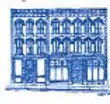 Charles Ilfeld Building, 224 N. Plaza (Built 1882-1890)
Charles Ilfeld Building, 224 N. Plaza (Built 1882-1890)
Mercantile and dry goods merchant Charles Ilfeld relocated his business to the Las Vegas Plaza by 1870 from Taos, as he saw the potential of trade on the Santa Fe Trail. By 1882 he had prospered to the point he could erect the first third of his Italianate building and completed the larger second stage by 1890. Between World War 1 and 2, the Ilfeld Company continued to grow, becoming the largest mercantile firm in the state, with warehouses and stories in every major city in New Mexico.
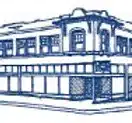 Romero Building, now Plaza Drugs 178 Bridge st. ( Built 1919)
Romero Building, now Plaza Drugs 178 Bridge st. ( Built 1919)
Built by Secundino Romero, a local political leader and member of the wealthy Romero family, this was the last large new building constructed on the Plaza. The California Mission Revival styling of stepped parapet and corner pavilions with the red tile roofing is similar in design to the Murphey's Drug Building on Douglas, east of the river.
Aniceto Baca Building, 146 Bridge St. (Built 1884)
The Baca Building and Estella's to its west side are characteristic of the Italianate Commercial style, which predominated on Bridge Street and the Plaza in the 1880's. Loosely modeled after the the palazzos of Italian Renaissance merchant princes, the style is distinguished by heavy, decorative hoods over arched windows, ornate cornices supported by brackets, and cast iron structural columns.
 Stern and Nahm Building, 114 Bridge St. (Built 1885)
Stern and Nahm Building, 114 Bridge St. (Built 1885)
This building was originally occupied by the office for the Stock Grower weekly newspaper before being taken over by the Stern and Nahm dry goods firm in 1897. It is a typical Italianate style commercial building with large display windows and cast iron columns on the first floor, and Italianate style fabricated sheet metal ornamentation above.
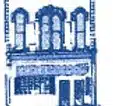 Hedgcock Building, 157 Bridge St. (Built 1882)
Hedgcock Building, 157 Bridge St. (Built 1882)
While the Hedgcock building has lost its bracketed metal cornice, its arched window hoods still reveal its original Italianate style. It has boot and shoe factory, a saloon and "lunch." It has been home to Stern's Famous Dry Goods, Charles Hegcock's boot and shoe factory, a saloon and "lunch." It was also once home to the West Las Vegas Town police station and jail. The jail sequence in the movie Easy Rider was filmed in this historic building in 1968. The Hedgcock building has been home to Tito's Jewelry store and art gallery for over a decade.
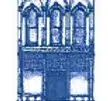 Courtroom Building, 213 S. Plaza (Built 1882)
Courtroom Building, 213 S. Plaza (Built 1882)
From 1882-1885, this building served as a courtroom. Like many buildings of the 1880s the Courtroom Building used readily available local stone for its side wall, reserving brick, which had to be shipped in by rail, for its facade. The arched recesses framing the second-story windows are the inventive touch of a local builder or architect.
